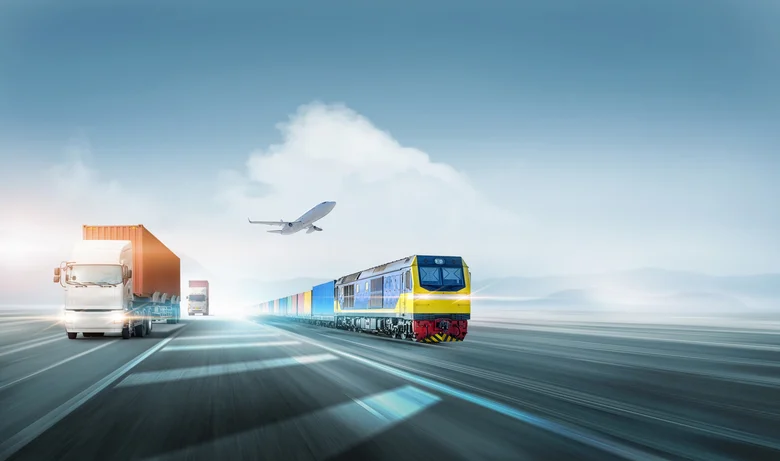From Road to Rail: The Changing Landscape of Freight Transportation

The landscape of freight transportation is pivotal to the functioning of economies around the globe. From delivering consumer goods to transporting industrial materials, the demand for nationwide freight services has been steadily increasing, driven by globalization and e-commerce. Efficient and reliable freight logistics enable businesses to meet customer demands rapidly, ensuring goods are delivered safely and on time. This efficiency is crucial for economic stability and ensuring that various sectors remain productive and competitive. As logistics networks grow more complex and interconnected, the focus shifts toward national-scale operations to ensure seamless transportation. Companies need to adopt more sophisticated tracking systems, advanced logistics planning, and other innovative measures to stay ahead of the game. This article delves into the current state of freight transportation, examines its emerging trends, and explores what the future holds for this crucial industry.
Current Trends in Freight Transportation
Several trends are shaping the future of freight transportation. The surge in e-commerce has dramatically changed consumer behavior, putting pressure on logistics companies to offer faster and more reliable delivery services. This transformation has led to the need for advanced warehousing solutions that include automation and real-time inventory tracking. Companies also leverage Big Data analytics to predict demand and optimize shipping routes, reducing delivery times and operational costs. Another significant trend is the growing use of intermodal transportation, where goods are moved using multiple modes such as rail, road, and sea within a single journey. According to Forbes, this approach reduces costs and minimizes environmental impacts, making it an attractive option for many businesses. The transition to intermodal solutions is helping companies better manage risks, reduce bottlenecks, and improve overall supply chain resilience.
Challenges Facing the Industry
Despite the advancements, the freight industry encounters several challenges. Infrastructure bottlenecks are one of the most pressing issues, which can cause significant delays and increase costs. Major cities often suffer from congested highways and outdated rail systems, impeding the smooth flow of goods. It can lead to longer delivery times and higher costs, ultimately affecting consumer satisfaction and business profitability. Labor shortages present another obstacle, particularly with the aging workforce and declining interest in logistics careers among younger generations. This issue is exacerbated by the cyclical nature of fuel prices, which can fluctuate wildly and affect operational costs. Companies are increasingly finding it hard to attract and retain skilled labor, which is critical for operations. Innovative solutions such as training programs and improved working conditions are being explored to address these concerns.
Technological Innovations Enhancing Freight Logistics
Technology is revolutionizing freight logistics. Autonomous trucks, for example, are no longer science fiction but a burgeoning reality. These self-driving vehicles promise to cut labor costs, reduce accidents, and improve delivery times. Blockchain technology is another game-changer. By offering a secure and transparent way to track shipments, blockchain can streamline supply chain operations and reduce fraud. Blockchain allows for creating a tamper-proof ledger where every transaction is recorded, making tracking the origin and journey of goods easier. Advanced tracking systems also enable real-time visibility, allowing companies to monitor their shipments at every stage and react quickly to any issues. These technologies offer more transparency, efficiency, and cost savings, positioning the industry for better future outcomes.
Sustainability in Freight Transportation
Companies are adopting greener practices and investing in technologies that reduce their carbon footprint. Electric and hybrid truck use is gaining traction, while innovations in fuel-efficient technologies are helping to cut emissions. Businesses are also exploring alternative fuels, such as biofuels and hydrogen, to reduce their environmental impact further. According to Scientific American, sustainable freight transportation helps companies comply with regulations and appeals to environmentally conscious consumers and investors. Incorporating sustainable strategies can result in enduring financial benefits and offer a competitive edge in a growing environmentally conscious industry. Companies are also looking into optimizing their supply chains to minimize waste and increase efficiency.
Government Regulations and Policies
Government regulations are crucial in shaping the freight industry. Policies regarding emissions standards, safety regulations, and trade tariffs significantly impact logistics operations. Businesses must adhere to these rules to prevent sanctions and guarantee efficient functioning. Regulatory frameworks often dictate the type of vehicles that can be used, the routes that can be taken, and even the hours that drivers can operate, affecting the overall logistics strategy. Understanding these regulatory frameworks is pivotal for businesses to successfully navigate the complex landscape of freight logistics. Governments also fund infrastructure projects, which can alleviate some of the bottlenecks currently plaguing the industry. Public-private partnerships are becoming increasingly popular as an effective way to tackle infrastructure obstacles, enhance road and rail systems, and establish more streamlined logistics routes.
Future Outlook of Freight Transportation
The future of nationwide freight transportation is promising and filled with opportunities. Ongoing technological progress and an increasing focus on sustainability are poised to revolutionize the sector. Businesses that can rapidly adjust to these changes utilizing innovative technologies and environmentally friendly practices will have a competitive edge in this ever-changing environment. Integrating AI and machine learning for demand forecasting, route optimization, and autonomous vehicle management will enhance efficiency.
Ultimately, the freight transportation industry must balance efficiency, sustainability, and compliance to meet the growing demands of the global market. As we move forward, we will focus on creating more innovative, greener, and reliable logistics networks to support the seamless flow of goods nationwide. With governments and businesses collaborating on creative solutions, freight transportation’s future looks brighter, more efficient, and eco-friendly.



